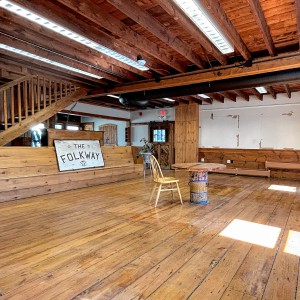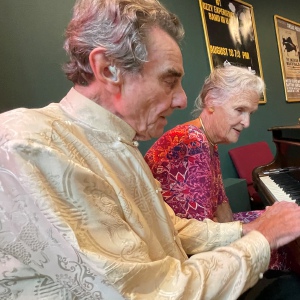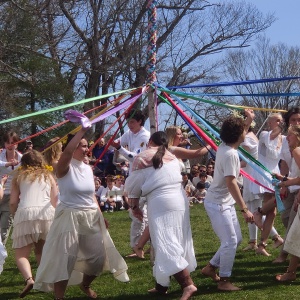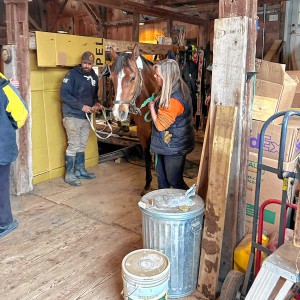Young scientists show off their stuff at science fair in Francestown
| Published: 04-15-2024 12:14 PM |
The Francestown Recreation Department hosted its second all-town science fair on Saturday at the Town Hall.
About a dozen Francestown young people competed in the fair, with projects exploring everything from electromagnetic theory to the dominant paws of cats. Children participating ranged in age from kindergarten through eighth grade.
Organizer Bob Bitterli of the Francestown Recreation Department said it was wonderful to see so many children taking part in the fair again this year.
“Our judges have very serious credentials. Several are PhDs from MIT and chemistry and biology professors. We have such an amazing amount of talent in this town,” Bitterli said. “Next year, we’re going to start earlier so there is enough time for the kids to qualify for the state science fair.”
This year’s judges were Bill Channon, BJ Carbee, Martine Bohnsack and Ted Graham. Marcy Tripp of the Recreation Department said the group had worked hard to organize the event were delighted with participation and turnout.
“Everyone pitched in to make it happen,” she said. “This is our second one, and every year, we will figure out how to make it better.”
At the close of the two-hour fair, Sam Feinberg of the Francestown Recreation Department announced the four winners.
Grand-prize winner Bryson Cook, 9, who attends Francestown Elementary School, demonstrated magnetic induction.
Article continues after...
Yesterday's Most Read Articles
 UPDATE: Drivers identified in Jaffrey dump truck crash
UPDATE: Drivers identified in Jaffrey dump truck crash
 Scott Bakula starring in Peterborough Players’ ‘Man of La Mancha’
Scott Bakula starring in Peterborough Players’ ‘Man of La Mancha’
 Fassett Farm Nursery in Jaffrey focuses on native plants
Fassett Farm Nursery in Jaffrey focuses on native plants
 Former home of The Folkway in Peterborough is on the market
Former home of The Folkway in Peterborough is on the market
 Bernie Watson of Bernie & Louise dies at 80
Bernie Watson of Bernie & Louise dies at 80
“I used copper coils to transmit electricity from one coil to another through the air,” Bryson explained. “The transistor and the resistor take the current from the battery and make it fluctuate between five volts and a lower voltage, which makes a fluctuating magnetic field. You have to have a fluctuating magnetic field to transfer electricity to the other coil.”
Kali Paige, who was awarded the first-place ribbon, explored the digestive system of dogs.
“I wanted to actually re-create the stomach of a dog, but they don’t sell hydrochloric acid anywhere,” Kali said. “I learned that dog’s stomachs are 10 times more acidic than a human stomach. They can actually dissolve metal.”
Kali, who is a home-schooled eighth-grader, hopes to become a veterinarian.
Skyler Mafera, a first-grader at Francestown Elementary School, was awarded the third-place ribbon for her project “Do Dark Colored Crayons Melt Faster than Lighter Colored Crayons?”
“My hypothesis was incorrect. I thought the light-colored crayons would melt faster, but the darker ones melted faster. The black crayons melted the fastest. They only took five seconds to melt,” Skyler said.
Skyler’s brother Parker, 8, was awarded the second-prize ribbon for his experiments investigating the effects of various liquids on the consistency and form of gummy bears.
“I thought water would make the gummy bears the largest, and it did. I also thought vinegar would dissolve the gummy bear completely, and that was true, too,” Parker said.
Parker said he did get some unexpected results.
“When I poured Coke on a gummy bear, it dissolved the surface color off of the bear, but it didn’t dissolve the bear, and the bear didn’t absorb the Coke. I don’t know why,” Parker said.

 High Mowing School in Wilton holds May Day Festival
High Mowing School in Wilton holds May Day Festival New Ipswich firefighters called on to rescue horse
New Ipswich firefighters called on to rescue horse PHOTOS: A night at the sock hop in New Ipswich
PHOTOS: A night at the sock hop in New Ipswich
